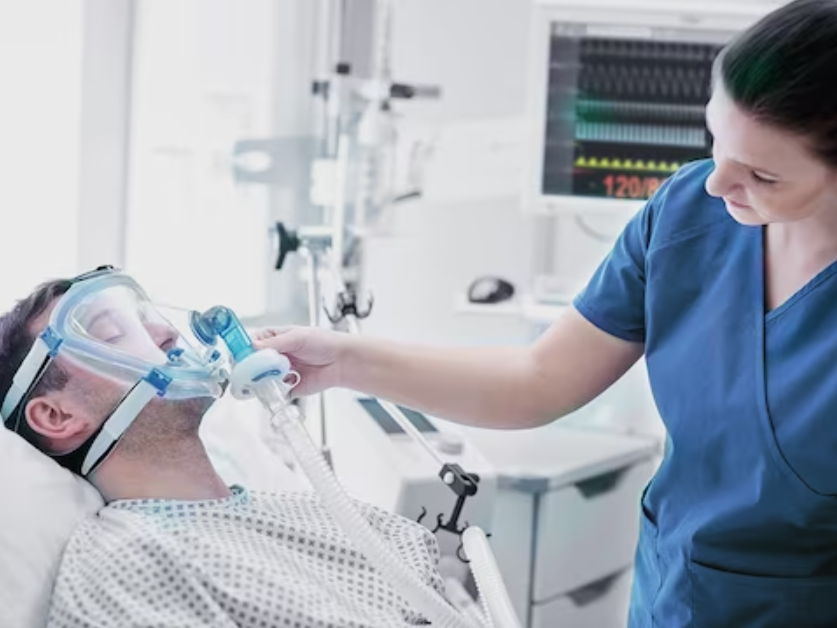Background: A breath-synchronized nebulization option that could potentially improve drug delivery during noninvasive positive pressure ventilation (NIPPV) is currently not available on single-limb circuit bilevel ventilators. The aim of this study was to compare urinary excretion of amikacin following aerosol delivery with a vibrating mesh nebulizer coupled to a single-limb circuit bilevel ventilator, using conventional continuous (Conti-Neb) and experimental inspiratory synchronized (Inspi-Neb) nebulization modes.

Materials and methods: A crossover clinical trial involving 6 noninvasive ventilated healthy volunteers (mean age of 32.3 ± 9.5 y) randomly assigned to both vibrating mesh nebulization modes was conducted: Inspi-Neb delivered aerosol during only the whole inspiratory phase, whereas Conti-Neb delivered aerosol continuously. All subjects inhaled amikacin solution (500 mg/4 mL) during NIPPV using a single-limb bilevel ventilator (inspiratory positive airway pressure: 12 cm H2O, and expiratory positive airway pressure: 5 cm H2O). Pulmonary drug delivery of amikacin following both nebulization modes was compared by urinary excretion of drug for 24 hours post-inhalation.
Results: The total daily amount of amikacin excreted in the urine was significantly higher with Inspi-Neb (median: 44.72 mg; interquartile range [IQR]: 40.50-65.13) than with Conti-Neb (median: 40.07 mg; IQR: 31.00-43.73), (p = 0.02). The elimination rate constant of amikacin (indirect measure of the depth of drug penetration into the lungs) was significantly higher with Inspi-Neb (median: 0.137; IQR: 0.113-0.146) than with Conti-Neb (median: 0.116; IQR: 0.105-0.130), (p = 0.02). However, the mean pulmonary drug delivery rate, expressed as the ratio between total daily urinary amount of amikacin and nebulization time, was significantly higher with Conti-Neb (2.03 mg/min) than with Inspi-Neb (1.09 mg/min) (p < 0.01).
Conclusions: During NIPPV with a single-limb circuit bilevel ventilator, the use of inspiratory synchronized vibrating mesh nebulization may improve pulmonary drug delivery compared with conventional continuous vibrating mesh nebulization.
Reference
Jean-Bernard Michotte, Enrico Staderini, Anne-Sophie Aubriot, Emilie Jossen, Jonathan Dugernier, Giuseppe Liistro, and Gregory Reychler,: Pulmonary Drug Delivery Following Continuous Vibrating Mesh Nebulization and Inspiratory Synchronized Vibrating Mesh Nebulization During Noninvasive Ventilation in Healthy Volunteers.

中国大陆
简体中文
United Kingdom
English